The Das Keyboard 5Q Cloud-Connected Mechanical Keyboard Review: How To Get Noticed
by E. Fylladitakis on February 26, 2019 10:00 AM ESTThe Das Keyboard 5Q Cloud-Connected Mechanical Keyboard
Much like most keyboards from Das Keyboard, the design of the 5Q is elegant and serious, with the designer clearly focusing on professional users. If not for the volume control wheel and the three flat buttons above the numpad, the 5Q could be easily mistaken for a simple run-of-the-mill keyboard. That being said, the Spartan design of the 5Q also means it's not locked in any one niche; gamers that prefer a clean-looking desktop over peripherals with complex motifs would be right at home as well.
A closer look reveals that the top part of the keyboard is metallic. So perhaps it's no surprise then that the 5Q is noticeably heavier than most standard-sized mechanical keyboards.
Even though the top plate of the keyboard is metallic, Das Keyboard did not go with the “floating keycaps” design that many other manufacturers adopt. The 5Q sports standard-height keycaps that are engulfed by the metallic frame, just like a classic keyboard. Das Keyboard moved the indicator LEDs just above the arrow keys, leaving the top right corner of the keyboard to the three extra buttons and the volume control knob. A nice touch is that the indicator LEDs light up slowly instead of instantly, creating a subtle visual effect and going easy on the eyes in a dark room.
We received the US layout version of the Das Keyboard 5Q. The main part of the keyboard is a standard 104 keys design that does fully adheres to the ANSI layout, with a 6.25× space bar and seven 1.25× bottom row keys. There is no company logo to be found anywhere on the keyboard itself. The characters on the keycaps are placed at the center of the keycap, as the LEDs of the Omron mechanical switches are found at the center of the key. The font is perhaps a bit too small and/or too bold for a keyboard whose main feature relies on backlighting.
The first of the three extra buttons above the numpad controls the backlighting brightness. There are eleven brightness levels, from 0 (off) to 10. The other two buttons are meant for basic media control and are a Play/Pause button and a Forward button. Considering that the Back and Stop buttons are missing entirely, perhaps the designer could have these two buttons do something more useful instead. A large volume control knob dominates the top right corner of the keyboard. The knob’s rotation feels nothing short of perfect, with a very soft and smooth ratcheting movement. Furthermore, the knob itself acts as a large button, one that launches the keyboard’s programming software.
While the company’s logo may not be found anywhere on its top side, Das Keyboard engraved their logo across most of the 5Q’s bottom side. Other than that, we only found rubber anti-skid pads and two plastic tilt-adjustment feet at the bottom of the keyboard. The tilt adjustment feet look a bit small but note that the keyboard does have a slight tilt by default.
One of the unique features of the Das Keyboard 5Q is the Gamma Zulu mechanical switches, which the company developed and are manufactured by Omron. The Gamma Zulu switches are exclusive to Das Keyboard – at least for the time being. These appear very similar to Logitech’s Romer-G switches, but their travel distance is shorter, at 3.5 mm instead of 4.0 mm. The Gamma Zulu switches also have the highest reliability ratings in the market, as they are rated at 100 million keystrokes each.
Overall, the Gamma Zulu switches are silent tactile switches, and someone could possibly compare them to Cherry’s MX Brown switch. But their actual feeling is a lot different. Meanwhile the design of the Gamma Zulu switch is also entirely different than the Cherry MX switches and their clones, with the LED placed at the center of the switch and a semi-translucent stem surrounding the switch.
Although this design does have certain advantages, especially with the strength and smoothness of the backlighting, the keycaps of the Das Keyboard 5Q are incompatible with any keycap that is designed for Cherry MX switches and clones. It will be nearly impossible to find a replacement keycap set for this keyboard, let alone fancy custom keycaps. That could prove to be a problem in the long run, as the 5Q is using simple ABS keycaps with laser-etched characters. Sooner or later, these keycaps will at the very least become polished, and unless third parties step in and start producing compatible keycaps just for the Gamma Zulu switches, replacing those keycaps will probably be possible only through the company’s support department.
The RGB backlighting of the Das Keyboard 5Q is exceptionally well applied, with minimal bleeding around the keycaps and very bright, clean legend characters. The keyboard also features an “enhanced lighting” mode that requires a USB 3.0 port to function, as it quite obviously has high power requirements that go beyond the 2.5W that a USB 2.0 port can provide. When connected to a USB 3.0 port, the Das Keyboard 5Q can indeed reach very high illumination levels that would be blindingly bright for use in a dark room. And even in a partially sunlit room, the keyboard’s LEDs were still visible.
The heart of the Das Keyboard 5Q is an STMicroelectronics STM32F401 ARM microcontroller. It is one of STM's most efficient microcontrollers and one of the best that we've ever seen to date inside a keyboard. It has an 84 MHz processor with a 12-bit ADC (0.41ms), which is why the Das Keyboard 5Q has a virtually instant response time when it comes to internal functions. End-to-end response times are a bit higher, as no matter how fast the controller is, as a single part of a whole system it isn't resposible for other sources of latency such as the USB bus itself.
It is also worthwhile to mention that we spotted an Altera (Intel) 5M80Z Complex Programmable Logic Controller on the keyboard's PCB. This chip is commonly used for signal decoding, so it is probably used for the notification features.


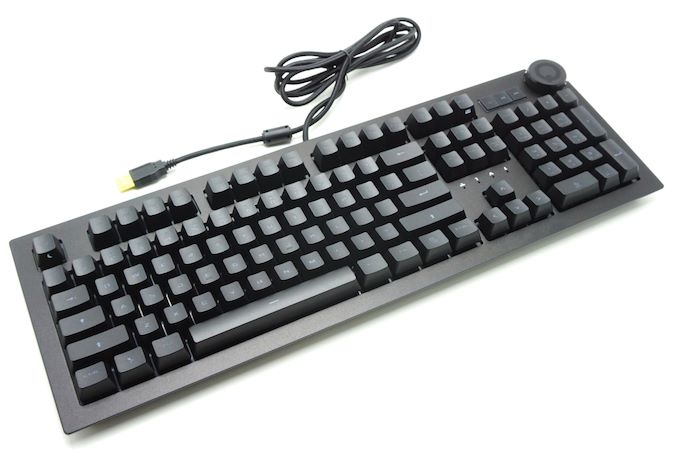
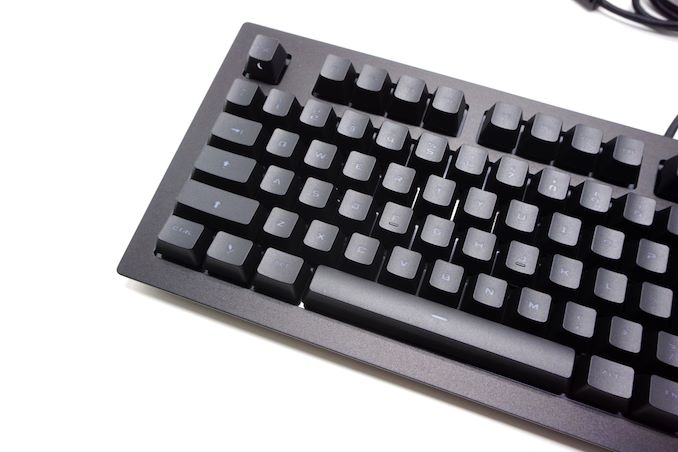
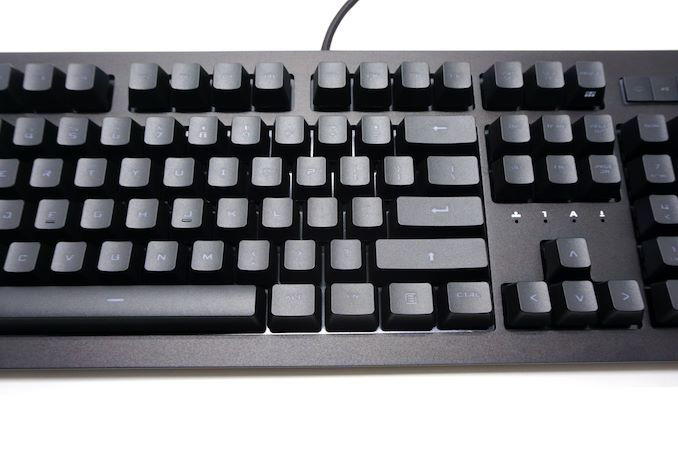

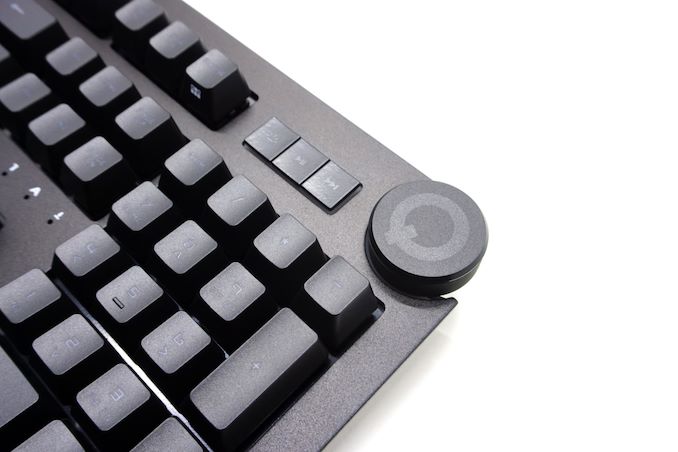
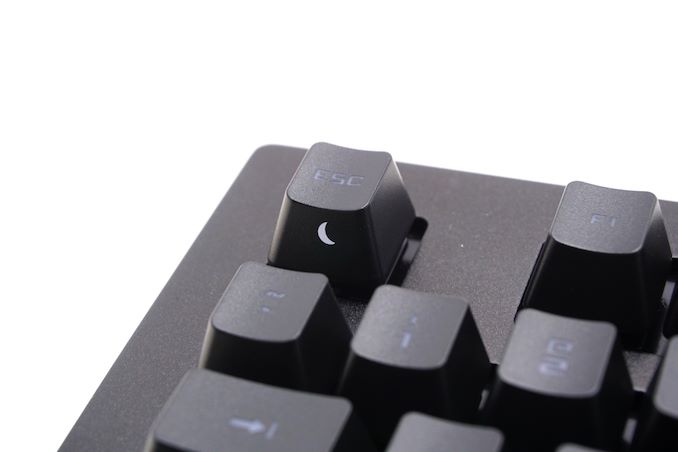
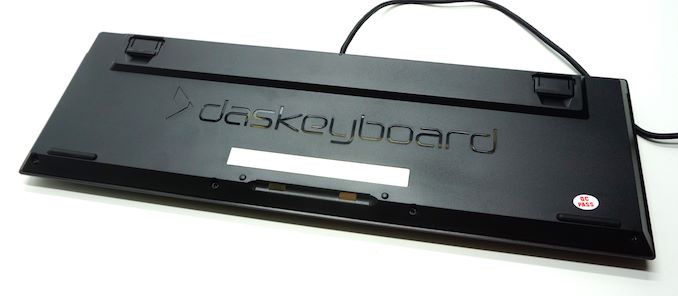
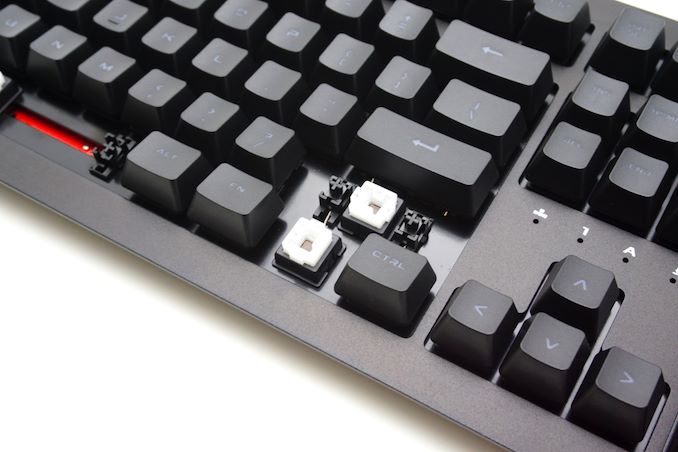
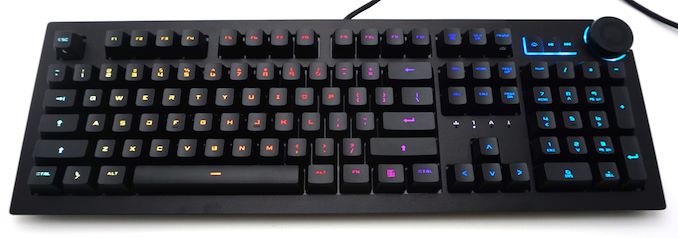
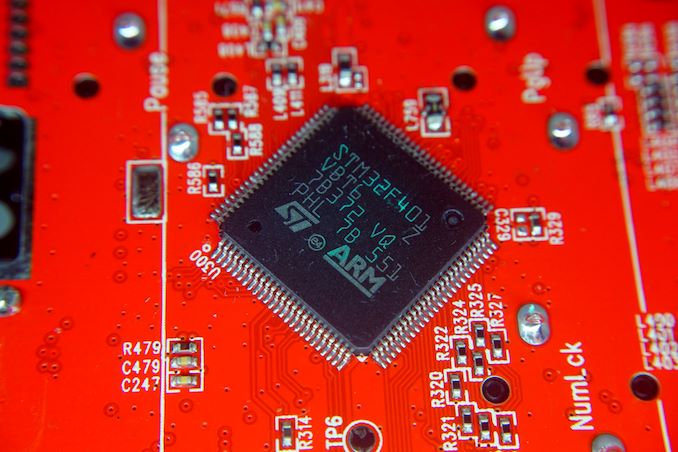
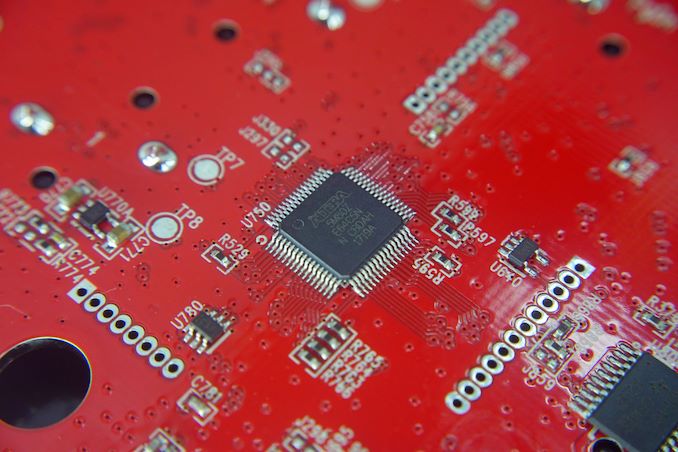
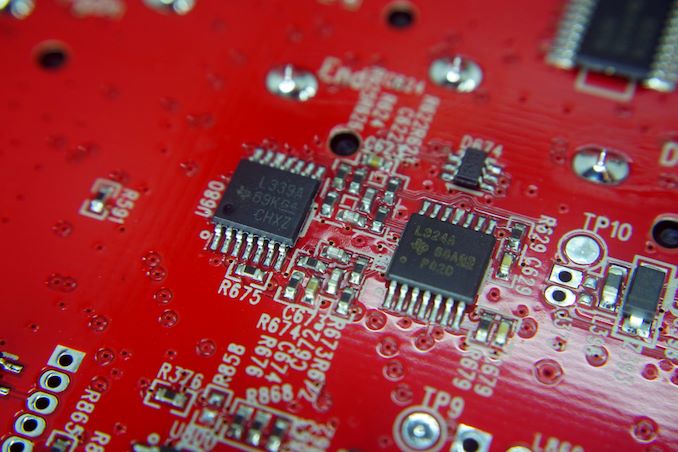








33 Comments
View All Comments
RSAUser - Tuesday, February 26, 2019 - link
I've converted the entire office.Actually had a lot of people comment on reduced finger fatigue and we had an increase in production (probably as most people can type faster with mech keyboard due to feedback).
Overall worth the $50 investment per keyboard about.
PeachNCream - Tuesday, February 26, 2019 - link
Just wait until the office squirrels get distracted by the RGB LEDs.Midwayman - Tuesday, February 26, 2019 - link
I used to have a keyboard with an actual LCD on it that could display far more internet information than this thing can it was almost useless. At least that could display information that might be hidden like teamspeak user currently speaking, track info on your media player without having to pull it up, etc. This is a solution looking for a problem.Lord of the Bored - Tuesday, February 26, 2019 - link
Ah, yes, the Logitech gamepanel.Those were cool, and I was kinda sad support was so limited. Not NECESSARY, by any stretch of the imagination, but... cool.
Azethoth - Tuesday, March 5, 2019 - link
No, they sounded cool but were just useless garbage. I bought one and that was the last time ever. I already have a giant monitor, i dont need a shitthy thing on my keyboard that I will never glance down to.drexnx - Thursday, February 28, 2019 - link
I kept a first gen (blue plus bigger screen) Logitech G15 loooong past when I should have replaced it, simply because that screen was so useful and cool. Finally caved and went RGB mech last yearjvl - Tuesday, February 26, 2019 - link
From the teaser:> This makes it one of the few keyboards that significantly stands out from the crowded market of commodity mechanical keyboards.
Me: what's so wrong about a commodity mechanical keyboard?
Ahmed sells this stuff for 30 €, hard to make a fortune there, and why would it? The wording in the introduction was excellent and highlights the "problem" well
chaos215bar2 - Wednesday, February 27, 2019 - link
“But what is a “cloud-connected” keyboard? Simply put, it is a keyboard that “talks” with the internet – or rather specific cloud-based services and protocols, to be a bit more precise.”Go on…
“This theoretically sounds very interesting…”
Really? Why?
“…as the keyboard can source information from the internet and provide feedback in real time”
Such as?
“but also connect to compatible ‘smart’ devices around your home and display information or control them.”
Ok. How does this work, and why would I want my keyboard to do that?
“For example, the keyboard could theoretically be programmed to flash a key when a smart door sensor triggers…”
Mmkay.
“or to change its backlighting settings depending on the status of the stock market.”
Well, actually that’s kind of cool. But could this just be done with software running on the computer the keyboard’s connected to?
“Aside from that, Das Keyboard is the first company that's implementing Omron’s new Gamma Zulu mechanical switches, making the 5Q a truly unique keyboard.”
Uh… cool? I thought we were talking about cloud connectivity. Why is that interesting, again?
Icehawk - Wednesday, February 27, 2019 - link
Maybe I missed it since I skim these reviews but HOW does it display notifications - I'm assuming it's by flashing lights/changing colors? I don't know about you but I rarely am looking at my keyboard, it is significantly below my sightline. You know what isn't? A secondary monitor.Azethoth - Tuesday, March 5, 2019 - link
Yes, my Corsair Platinum RGB provides the even better functionality of lighting up like a xmass tree when good loot drops in Diablo 3. But its not connected to the internets, its connected to ... my computer.